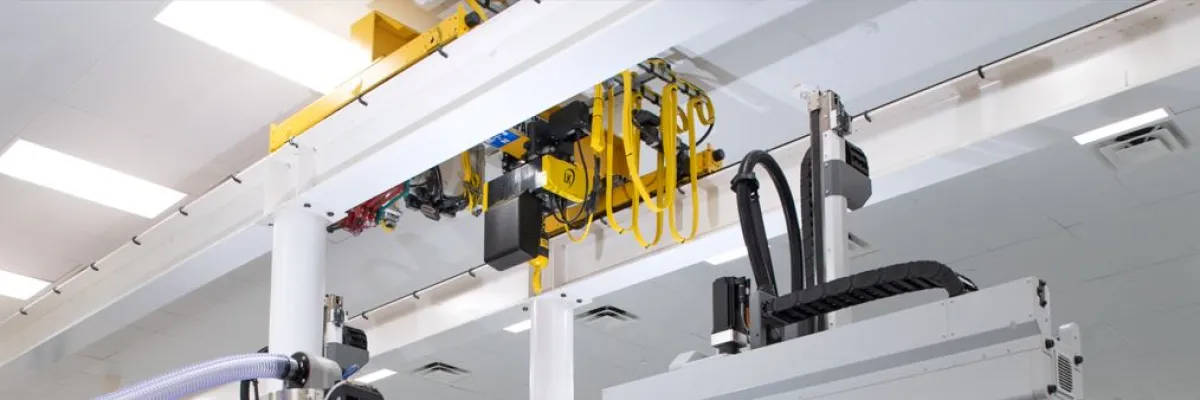
Retractable Technologies, Inc. (RTI) designs, develops, manufactures and markets safety syringes for the healthcare industry. Overhead crane and hoist manufacturer R&M Materials Handling, Inc. and its distributor OMi Crane Systems, Inc. combined to deliver an overhead crane solution for Retractable Technologies’ factory in Little Elm, Texas.
The Application: RTI’s VanishPoint products have a unique retractable syringe and are used to administer the Moderna and Pfizer vaccines. The company opened a third building in Little Elm in 2021 in order to meet demand for its retractable syringes during the pandemic.
The Challenge: RTI was previously using monorails over their injection molding machines and forklifts on the ground for transportation, but they found this to be inefficient because the fixed monorail beams did not offer any side-to-side movement capability of the trolley. This created a challenge of locating the molds in the machine as well as unloading and moving the molds around their facility. They needed a solution to transport and service the company’s plastic injection molds, which can weigh up to 6,000lbs.
The Solution: OMi Crane Systems, Inc. recommended the installation of three cranes from R&M Materials Handling, Inc. OMi supplied RTI with 3-ton capacity, top-running single girder bridge cranes that feature an electric chain hoist and motorized trolley. OMi fabricated the bridge cranes from R&M crane components and also designed and fabricated a freestanding pipe column runway system for each of the three systems.
The Results: The first crane was installed in March 2021, then RTI ordered an additional two cranes from OMi, which were installed in June and September. RTI reports that the lifting equipment provides a safe and efficient way to move heavy molds that would otherwise require a lot of intense physical labor. The cranes also reduce the risk of injuries and decrease downtime. When a mold arrives, the cranes are used to uncrate it, move it to its desired location and carefully insert it into a molding machine for production. The cranes also assist with servicing and repairing the molds by removing them from the molding machines.
